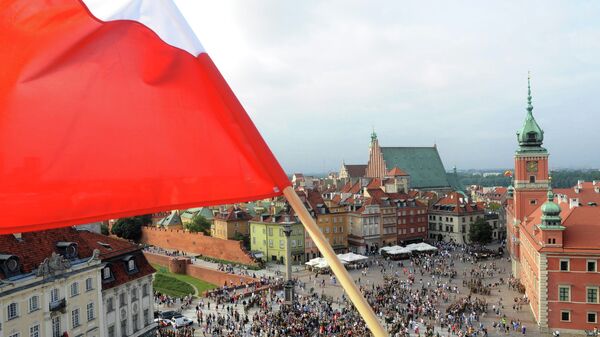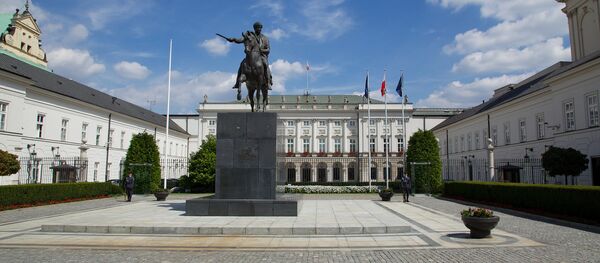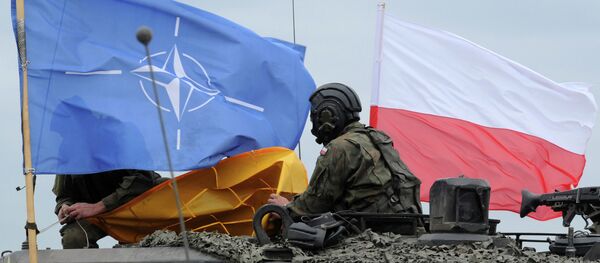Interwar Poland, officially called the Second Polish Republic, is known for its two interconnected foreign policy objectives of “Prometheism” and “Intermarium”.
Roughly 80 years after its original plans fell flat, Poland is once again attempting to revive its Intermarium strategy through the “Three Seas Initiative” between itself and 11 other EU countries, stretching between the Adriatic, Baltic, and Black Seas. The details of this endeavor were touched upon in the author’s analysis for the Centre for Research on Globalization regarding the “Geostrategic Insights Into The Joint Polish-Croatian ‘Three Seas Initiative’”. The present article will approach the subject from the perspective of how some of Poland’s interwar domestic political and grand strategic lessons are shaping the new Intermarium for success.
Same Poland, Different Perspectives
This time, however, the Intermarium has no intent of integrating with Belarus and Ukraine, but is focused entirely on the West (including its northern Baltic direction). This isn’t due to any sudden Russophilic feelings from Poland, but is attributable to current geostrategic imperatives of its position in Europe. Nevertheless, it’s interesting to note that Poland’s Intermarium no longer looks East, but West, and this in a sense embodies the general idea of the Piast Concept promoted by prominent interwar opposition politician Roman Dmowski.
Unlike his rival Pilsudski who yearned to recreate the glory days of the Polish-Lithuanian Commonwealth through his Jagiellonian Concept, which prioritized Poland’s multicultural Eastern periphery, Dmowski’s Piast Concept stretched even further back into history. He aimed for a return to the country’s founding dynasty which held more Western lands and was entirely Polish.
Through his “gray cardinal” leadership of Poland, Pilsudski wanted to entrench his country’s diverse Eastern identity through the absorption of post-Promethean pieces of the USSR (the rest of then-divided Belarus and Ukraine) into the Second Polish Republic and then secure Warsaw’s envisioned Great Power status through a broad network of partnerships known as the Intermarium. Opposition leader Dmowski, however, preferred Poland to instead focus on the Western Roman Catholic and Polish-majority portions of the country, having no appetite for Pilsudski’s Promethean adventures and Intermarium fantasy.
What’s ironic, is that the seemingly contradictory elements of Pilsudski’s Jagiellonian Concept and Dmowski’s Piast came together in their own hodge-podge manner to determine Poland’s post-1989 geostrategic position and then rework themselves in forming the basis for its new attempt at rebuilding the Intermarium.
Hodge-Podge
Prior to the ruling Law and Justice Party’s (PiS) historic return to office in 2015, pre-Intermarium Poland was generally characterized by the Jagiellonian Concept of diversity but geopolitically oriented toward the West. This came with an important caveat, however, in that the “diversity” being pursued didn’t have anything to do with absorbing fellow Slavs who had in the past been under controversial periods of Polish control (though it nevertheless continued to support the anti-government “opposition” in Belarus).
It also theoretically allowed “open borders” for any of its fellow EU-member citizens to migrate to Poland. It was also uncertain at the time whether this neoliberal social approach would apply to non-bloc members as well, though it would later turn out that this issue would be the ‘straw that broke the camel’s back’ and pushed PiS into pursuing its geostrategic readjustment in Europe.
The “New Poland” Intermarium of the 21st-Century envisions itself as a very strict defender of Dmowski’s Piast Concept of an ethnically and religiously homogenous homeland. At the same time, it embraces the Jagiellonian idea of broadening the country’s international horizons through a Warsaw-led network of likeminded Central and Eastern European states to balance against their Western “partners”.
Just like with the post-1989 vision of Poland, this also comes with an important caveat: the EU’s freedom of movement and employment rights are still respected in Poland, but the line is clearly drawn in the sand when it comes to accepting the Brussels-enforced relocation of culturally dissimilar individuals from elsewhere (e.g. the Mideast, South Asia, and Western Africa). Because of the civilizational characteristics that the nationalist Polish government believes it shares with Ukrainians, they’ve been made an “exception” of sorts. Since 2014 over one million of them have moved to Poland.
Intermarium Insights
What’s so unique about this modern-day attempt to rebuild the Intermarium is that Poland is mixing and matching Pilsudskian/Jagiellonian and Dmowskian/Piast strategies to actualize its grand ambitions in returning the country to its long-lost but highly sought-after Great Power status.
This 21st-century iteration channels the ideas of its interwar strongman by having PiS leader Kaczynski fill his shoes as Poland’s “gray cardinal.” Its focus on accepting large (and some would argue, overwhelming) numbers of Ukrainian migrants, continuing to support the anti-government “opposition” in Belarus, and becoming the US’ chief NATO ally in Eastern Europe all point toward Poland embracing its historical animus against Russia. Finally, the very fact that there’s another attempt to recreate the Intermarium in the first place is proof enough that the Pilsudskian/Jagiellonian Concepts are playing a key role in Poland’s current grand strategy.
Nevertheless, the “New Poland” is much more committed to Europe than the “old” one was, so much so that it’s now leading a broad multinational coalition of partners (the Intermarium) in trying to pressure the bloc into enacting pro-sovereignty reforms and decentralization.
Moreover, it feels so strongly about this historical mission and in preserving the ethno-religious homogeneity of Polish civilization that it’s even risking EU sanctions in refusing to bow down to Brussels’ demands that it accept the forcible relocation of non-European migrants on its territory.
All in all, Poland’s prospects for the successful recreation of the cherished Intermarium of Pilsudski’s dreams are higher than at any time in history, though this by no means indicates that the task will be an easy one.
Quite the contrary, as there are many formidable challenges ahead of it which weren’t there the last time it tried this project, such as attempting to pull off this game-changing geostrategic pivot while technically under the boot of a foreign power, in this case Brussels (shadow-managed by Berlin).
Poland will have to creatively exploit the EU’s own legislation against it while simultaneously avoiding the careless chauvinism of stepping on the toes of its Czech, Slovak, and Lithuanian neighbors if it’s to stand a realistic chance at achieving its goals, but if it can pull it all off, then the country will once again earn its place in history as one of Europe’s Great Powers.
The views expressed in this article are solely those of the author and do not necessarily reflect the official position of Sputnik.





